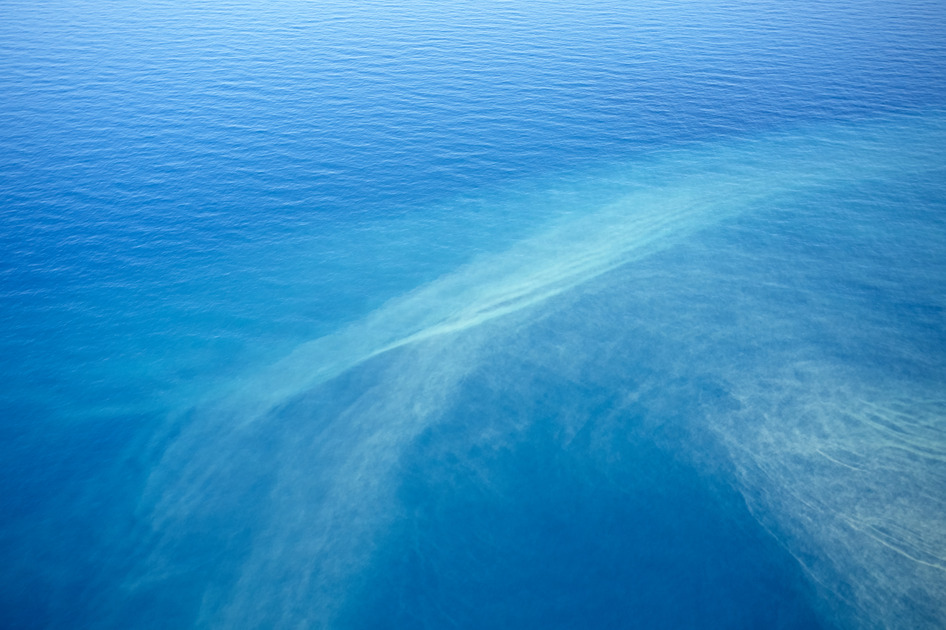Scientists have uncovered a hidden “superhighway” in the ocean depths that links marine life across the globe, the-independent.com. This ocean current discovery reveals that even the cold, dark depths of the sea are not isolated realms, but part of a vast interconnected network. The finding could reshape how we understand marine biodiversity and may carry implications for Earth’s climate systems.
A Global Network Beneath the Waves
In a groundbreaking study, researchers analyzed DNA from nearly 2,700 deep-sea creatures (ancient, spiny brittle stars) collected from 48 museums worldwide. The results were astonishing: these creatures, living thousands of meters below the surface, showed close genetic links despite being oceans apart. For example, species found off southern Australia were found to be closely related to species in the North Atlantic, on the opposite side of the planet the-independent.com. In other words, what lives in one part of the deep ocean may have evolutionary ties to life half a world away, indicating a continuous “superhighway” of genetic exchange over millennia.
Such connectivity had gone unnoticed until now. “You might think of the deep sea as remote and isolated, but for many animals on the seafloor, it’s actually a connected superhighway,” explains Dr. Tim O’Hara, the study’s lead author. Over long timescales – on the order of millions of years – deep-sea species have expanded their ranges by thousands of kilometers along this hidden highway the-independent.com. This global dispersal helps explain how similar life forms can thrive in deep oceans from the tropics to the polar regions.
Hitchhiking on Deep Ocean Currents
So, how do creatures with no wings or fins manage to traverse entire oceans? The secret lies in their biology and the ocean’s deep currents. Unlike shallow-water life, which is boxed in by changing temperatures and other barriers, the deep-sea environment is remarkably stable. Many deep-sea animals, like brittle stars, release yolk-rich larvae that can survive for long periods in cold, high-pressure waters. These tiny larvae effectively hitchhike on slow-moving deep currents, drifting vast distances and colonizing far-flung regions over time discoverwildlife.com.
Deep ocean currents act like conveyor belts for these larvae. In shallow waters, temperature differences and geographic obstacles limit how far a species can spread. But in the deep ocean, conditions are more uniform, allowing a larva born off the coast of one continent to ride the current and eventually settle thousands of kilometers away. This helps explain why deep-sea ecosystems show such strong links: the inhabitants have been mixing and migrating along continuous water flows for eons.
It’s important to note that this deep-sea superhighway operates on geologic timescales. The brittle stars in the study have existed for over 480 million years, plenty of time to roam the world’s oceans. Over the past ~100 million years, as continents drifted and climates changed, these creatures used the deep currents to steadily expand their territory. Generation after generation, their larvae drifted and settled, knitting together distant ecosystems into one large, connected biosphere.
A swirling school of barracudas demonstrates how marine life often travels in groups. Deep-sea species use ocean currents in a similar way, “riding” them over generations to spread across the globe discoverwildlife.com.
A Patchwork of Biodiversity Hotspots
The discovery of this oceanic superhighway has huge implications for marine biodiversity. It suggests that the deep ocean is one massive, intermixed ecosystem – but it’s not a uniform soup of life. Instead, scientists describe it as a patchwork of connected communities. Over long periods, species can spread widely thanks to the superhighway, yet isolation still occurs in pockets. Factors like undersea mountains, trenches, past extinction events, and environmental changes create barriers that break the highway into segments the-independent.com.
This means that while a brittle star species might be found in both the Indian and Atlantic Oceans, localized conditions can cause populations to evolve differently. In essence, the deep sea presents a paradox: high connectivity coupled with high diversity. “It’s a paradox. The deep sea is highly connected, but also incredibly fragile,” notes Dr. O’Hara, the-independent.com. There are invisible links spanning continents, yet unique species and genetic lineages can form when sections of the highway are cut off or when conditions favor local adaptation.
For conservationists, this is a critical insight. It implies that protecting marine life isn’t just a local affair, because deep-sea ecosystems are interlinked. Damage in one region could have ripple effects elsewhere, given enough time. Conversely, a refuge area in the Pacific could serve as a source to repopulate other regions via larval drift. The global connectivity of deep-sea life means that international cooperation is needed to preserve these biodiversity hotspots as one integrated network.
Climate Connections and the Ocean “Highway”
Beyond biodiversity, the hidden ocean superhighway also connects to Earth’s climate impact in profound ways. Ocean currents do more than ferry larvae; they transport heat, carbon, and nutrients around the planet. In fact, the deep ocean current system – often called the global ocean conveyor belt – plays a critical role in regulating the global climate. It carries warm water from the equator toward the poles and sends cold, dense water back toward the tropics in the ocean depths, redistributing heat energy worldwide. This helps stabilize climate patterns by moderating temperatures between regions.
Map of the global ocean conveyor belt (thermohaline circulation). Warm surface currents (red) carry heat toward the poles, while cold deep currents (blue) flow back toward the equator commons.wikimedia.org. This vast circulation system influences climate and also provides pathways for marine life migration.
The newly discovered deep-sea superhighway can be seen as a biological component of this conveyor belt. As currents move water around the globe, they also disperse life and even nutrients that sustain marine food webs. Changes in ocean circulation, therefore, could have dual consequences: altering climate and disrupting ecosystems. Scientists are particularly concerned about the Atlantic Meridional Overturning Circulation (AMOC) – a key part of the global conveyor that includes the Gulf Stream – which appears to be weakening due to warming and fresh water influx from melting ice commons.wikimedia.org. If major currents like the AMOC were to slow down or shift, it would not only affect weather and sea levels, but also the routes along which marine species travel. The deep-sea communities that have been connected for ages might become isolated if their “current highways” change course.
In essence, climate change threatens to redraw the map of this ocean superhighway. Warmer oceans and altered salinity could change the speed and direction of deep currents, stranding some populations or blocking the dispersal of larvae. Such disruptions would fragment the global network of marine life, potentially leading to declines in biodiversity. On the other hand, studying this hidden highway could improve climate models – by understanding how water and life circulate together, scientists can better predict how the ocean will respond to a warming world.
Protecting a Fragile, Interconnected Ocean
Recognizing the deep ocean’s interconnectivity underscores a clear message: protecting it requires a global perspective. What happens in the depths of one coast can influence life in distant seas. Human activities like deep-sea mining, bottom trawling, and unabated carbon emissions pose new threats to this fragile superhighway. Deep-sea mining for minerals, for instance, could destroy habitat in one region, severing the routes species use to disperse. Climate change, as discussed, is warming and acidifying the ocean, potentially detouring or even collapsing parts of the conveyor belt that marine life depends on.
Scientists stress that international collaboration is essential to safeguard these underwater corridors. The very discovery of the ocean superhighway was itself a triumph of global teamwork – researchers from over 40 institutions pooled specimens and data from across the world sciencedaily.com
. Going forward, sharing information (such as DNA data and oceanographic records) will help monitor the health of this connected system. “Understanding how life is distributed and moves through this vast environment is essential if we want to protect it,” Dr. O’Hara emphasizes.
Efforts are already underway to use advanced technology for monitoring ocean currents and their biological passengers. Satellites can now track even small ocean eddies and internal waves, revealing how nutrients and perhaps larvae move vertically and horizontally through the sea swot.jpl.nasa.gov. Autonomous deep-sea vehicles and long-term sensors can directly observe life in the abyss, watching for changes in species distributions. These tools, combined with policies that limit destructive practices, could help maintain the integrity of the ocean’s superhighway.
In conclusion, the hidden ocean superhighway is a reminder of how marvelously interconnected our planet is. The deep sea – often thought of as Earth’s most isolated environment – turns out to be linked across hemispheres by the flow of water and life. This discovery not only revolutionizes our understanding of marine biodiversity but also rings alarm bells about our climate. Protecting this submarine superhighway and the countless species riding its currents will be crucial for the health of our oceans in a changing world. By illuminating the secret pathways of the deep, science gives us a chance to steer this network toward a sustainable future





